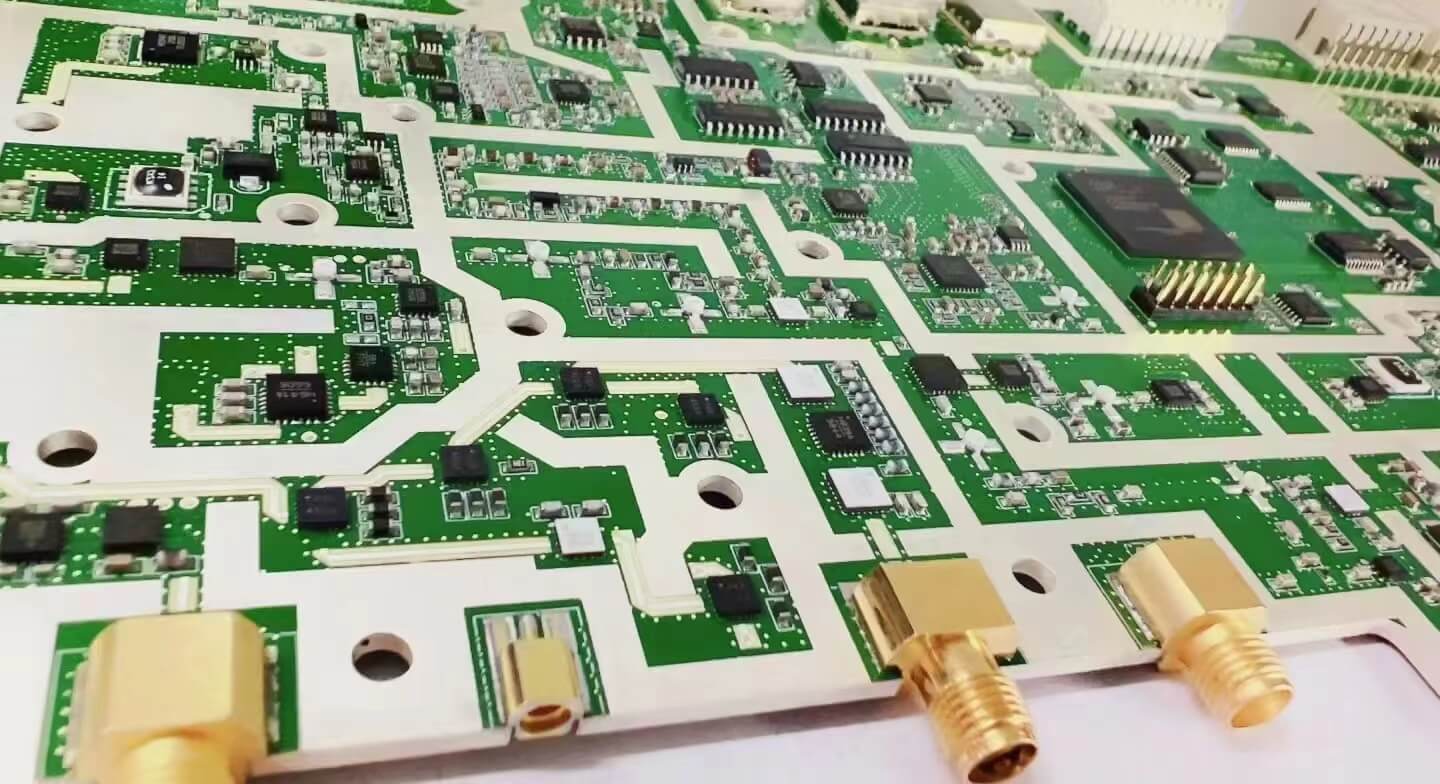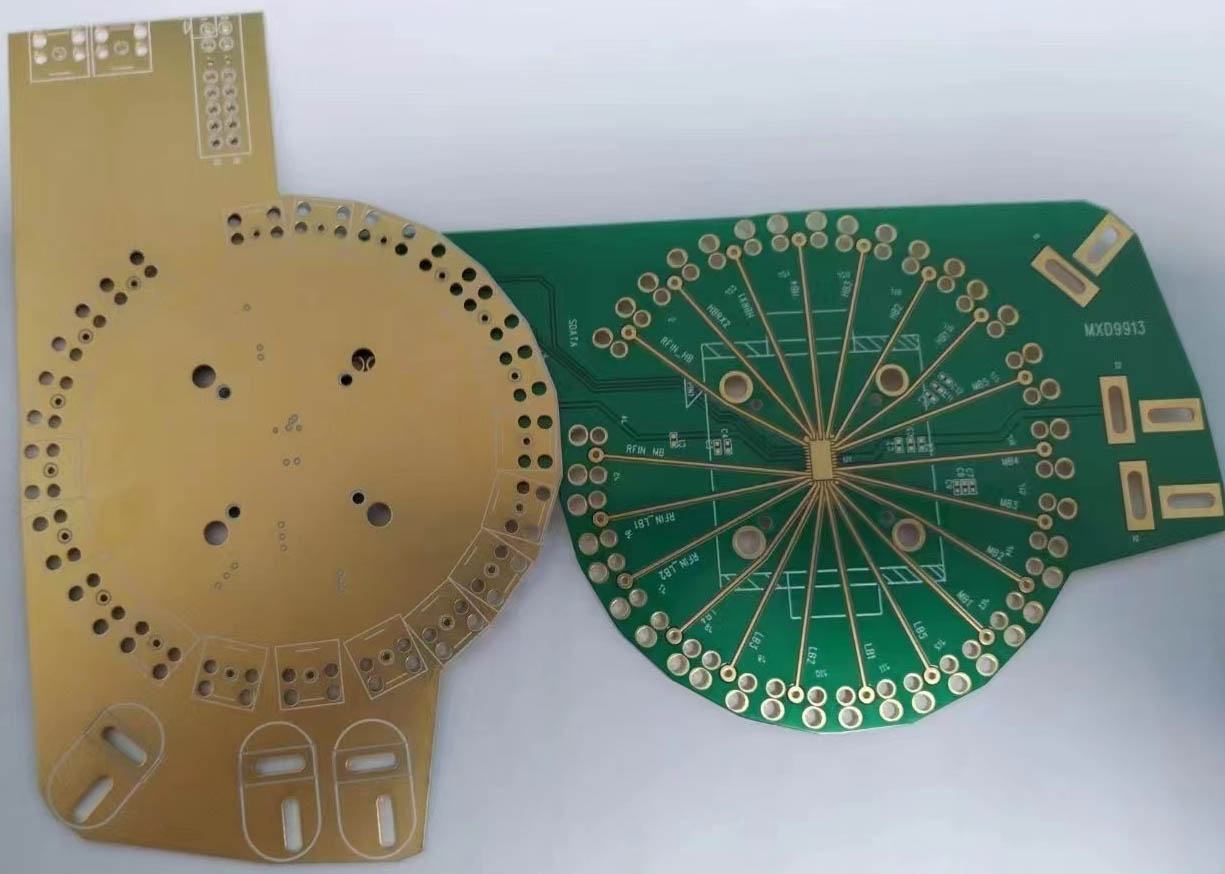With the development of electronic technology. The production of electronic products also requires more and more materials, such as high-frequency PCB materials. Take Rogers as an example. Rogers PCB material is a high-frequency PCB material model produced by ROGERS, which is different from the conventional PCB material epoxy resin. It is made of ceramic-based high-frequency material without glass fiber. When the working frequency of the circuit is above 500MHz, the range of materials that can be selected by high-frequency PCB design engineers is greatly reduced.
Rogers RO4350B allows RF engineers to design circuits conveniently, such as network matching, impedance control of transmission lines, etc. Due to its low dielectric loss, R04350B material has more advantages than ordinary circuit materials in high-frequency applications. Its dielectric constant fluctuation with temperature is almost the lowest among similar materials. In the wide frequency range, its dielectric constant is also quite stable at 3.48, and the design recommended value is 3.66. LoPra ™ Copper foil can reduce insertion loss. This makes the material suitable for broadband applications.

Rogers PCB ceramic high-frequency PCB material series classification:
Rogers RO3000 series: PTFE circuit materials based on ceramic filling. Rogers models include: RO3003, RO3006, RO3010, RO3035 high-frequency laminate.
Rogers RT6000 series: based on ceramic filled PTFE circuit materials, designed for electronic circuits and microwave circuits requiring high dielectric constant. Rogers models include: RT6006 dielectric constant 6.15, RT6010 dielectric constant 10.2.
Rogers TMM series: composite materials based on ceramics, hydrocarbons and thermosetting polymers. Rogers models: TMM3, TMM4, TMM6, TMM10, TMM10i, TMM13i. wait
At present, the global 5G layout is accelerating increasingly. The traditional 3G/4G base station distributed architecture can be divided into BBU, RRU and antenna feeder system, where RRU and antenna feeder system are connected through feeder. Due to the increased risk of transmission loss under high frequency, the integrated RRU and antenna feeder system architecture can reduce the signal loss on the feeder and improve the transmission efficiency. High integration makes a large number of scattered components replaced by PCB boards, and ultimately increases the unit usage of PCB.
5G high-frequency frequency makes PCB materials high-frequency
In the 5G era, high frequency PCB must be used (3GPP has specified the frequency range supported by 5GNR to be 450MHz-52.6GHz). The reason is that:
1. After the iteration of the previous four generations of communication technology, the resources in the low frequency band have been occupied, and the resources that can be used for 5G development are not many;
2. The higher the frequency, the more information can be loaded, and the richer the resources, which can also make the transmission rate higher (for example, in 100MHz, only five 20MHz channels can be separated, while in 1GHz, 50 20MHz channels can be separated).

Due to the resonance phenomenon caused by the load and the influence of the transmission line effect, the higher the frequency of the electromagnetic wave, the more severe the attenuation. To achieve efficient transmission at high frequency, it is necessary to control the loss of the signal on the transceiver and transmission device. The corresponding bearing device will change from the conventional PCB material to the high-frequency PCB material (such as Rogers 4350). Specifically, the terminal antenna originally used FPC (flexible circuit board) with PI as the main material, However, due to the high dielectric constant (Dk, the ability of the propagation medium to block electrons) and dielectric loss (Df, the ability of the propagation medium to convert electrical energy into heat energy) of PI, the propagation efficiency is low, so the trend of replacing PI with liquid crystal polymer (LCP) with lower Dk and Df is increasingly prominent. At present, Apple has introduced LCP, and LCP material is expected to become the mainstream material in the future, taking Apple as an example, The single LCP module in iPhone X is about $4-5/antenna, while the traditional PI antenna is $0.4/antenna. There is significant room for improvement in the unit value.
The base station antenna also needs to use high-frequency materials (such as Rogers 4350). At present, the mainstream solution is to use polytetrafluoroethylene (PTFE) or hydrocarbon PCB (with very good dielectric properties). The price is about 3000-6000 yuan/square meter, and the price of ordinary PCB is about 1900 yuan/square meter. The unit value increases by about 1.5-3 times. The 3G/4G base station RRU needs a high-frequency AC board, The PCB board of the RF power amplifier needs to use high-frequency materials (such as Rogers 4350), but in order to save costs, FR4 and high-frequency substrate will be mixed together. The demand for 5G AAU medium and high-frequency AC boards for high-frequency PCBPCB materials (such as Rogers 4350) will increase, and the use of high-frequency materials in PCB boards will increase, thus increasing the value of single boards.
The three scenarios built in the 5G era (eMBB, mMTC, uRLLC) mean that we are about to enter the era of data explosion, and the amount of data will be a blowout. With the commercialization of 5G, the number of 5G connections in China will reach 428 million by 2025, and the five-year compound growth rate will reach 155.61%. The blowout of data demand forces the communication equipment to improve the data processing capacity, and the corresponding high-frequency PCB materials are expected to develop towards multi-layer, and the price of high-frequency PCB is also increased accordingly.